If you have been to Georgia or are planning to visit the country, you may have noticed that most of the sights in Georgia, except for the mountain villages and main cities, are Orthodox churches. Most of these churches have an ancient history.
Georgian temples
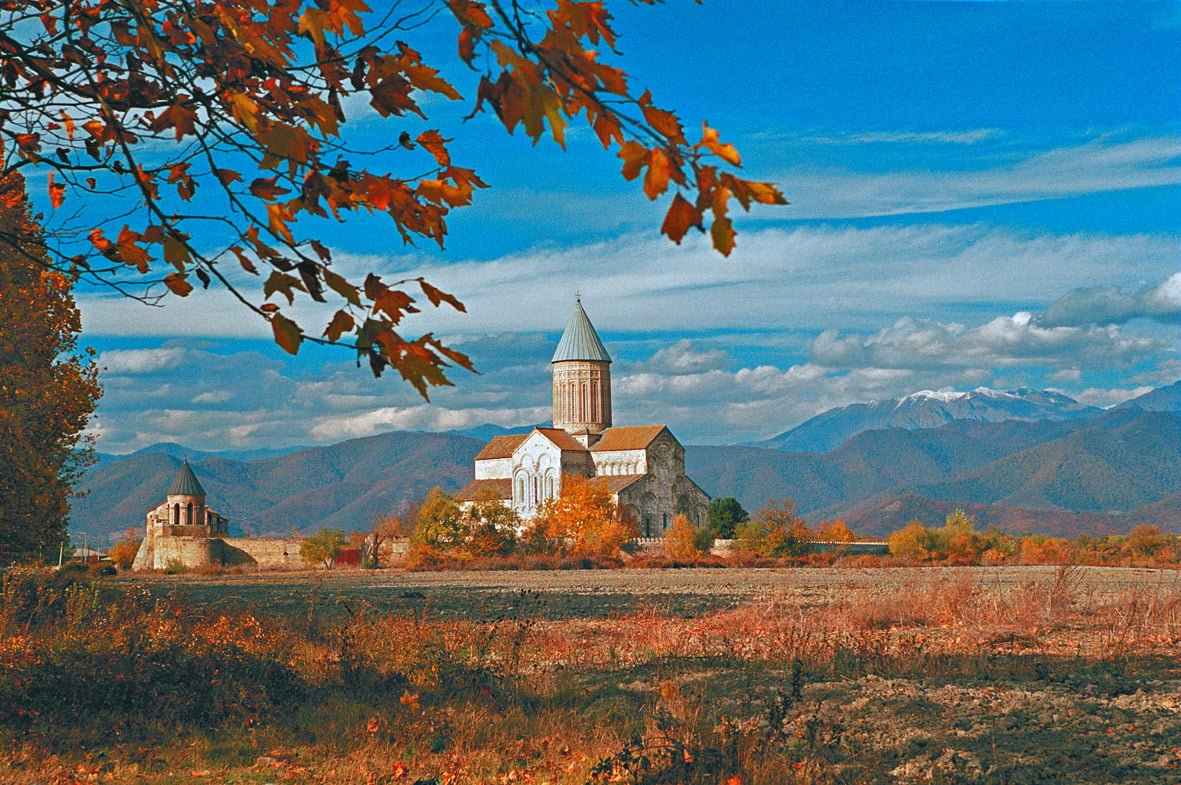
We offer you to go on fascinating architectural or religious tours, where you will visit the most ancient temples, monasteries and churches in Georgia. To make the trip as interesting as possible, our managers will offer you a route through the monasteries and temples both in the cities and in the mountains of this interesting tourist country. We are always happy to organize an unforgettable trip for You! Any more questions? Call: +995599955541.
Tbilisi Holy Trinity Cathedral
Often called in Georgian Sameba-Tbilisi Holy Trinity Cathedral is the main religious structure of the Georgian Orthodox Church in Тbilisi. The construction of the Church took almost 10 years, from 1995 to 2004, and is considered the third largest Eastern Orthodox Cathedral in the world. The building is a combination of traditional styles of Georgian Church architecture from different periods and even has some Byzantine connotations.
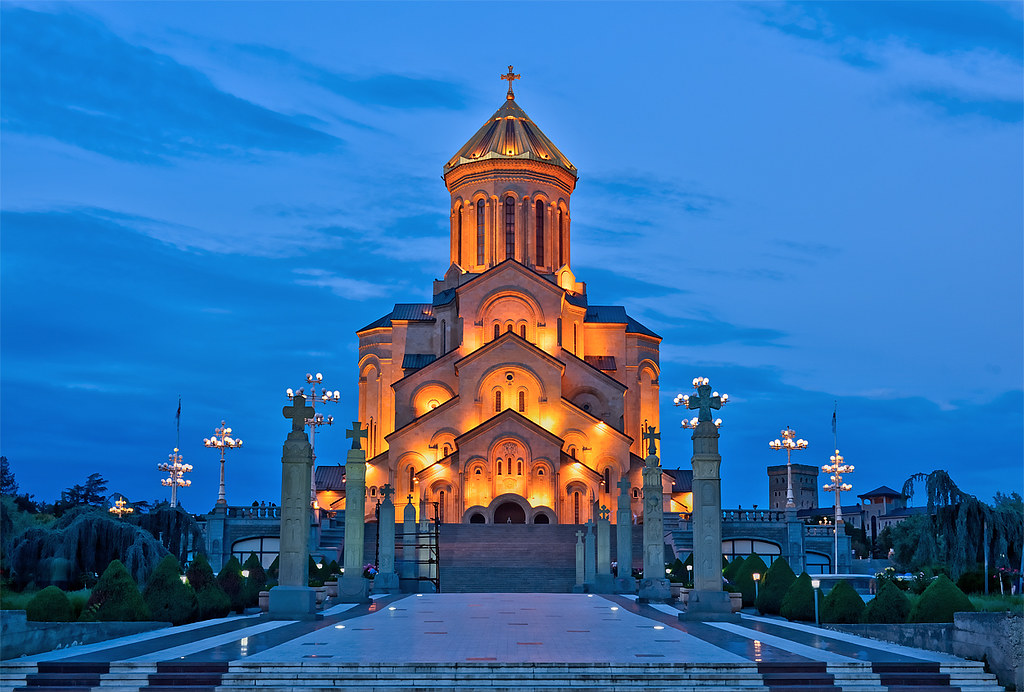
Svetitskhoveli Cathedral
Svetitskhoveli Cathedral, located in Mtskheta, in Mtskheta-Mtianeti,
is a masterpiece of the early middle ages and a UNESCO world heritage site. After the Holy Trinity Cathedral in Tbilisi, Svetitskhoveli is the second largest religious building in the country.
It is believed that the mantle of Christ is buried here, which is also why Svetitskhoveli Cathedral has become one of the main Georgian churches since its construction in 1029. Since its existence, the Cathedral has suffered many misfortunes, and many of its valuable frescoes have been highlighted by the Russian Imperial authorities. Fortunately, some of the frescoes were restored, including the 13th-century “beast of the Apocalypse” and the zodiac figure. Its walls are decorated with many Christian Orthodox icons, most of which are not original, as they are stored in national museums. There are examples of stonework that shows grapes on the walls, reflecting the ancient Georgian wine-making traditions.
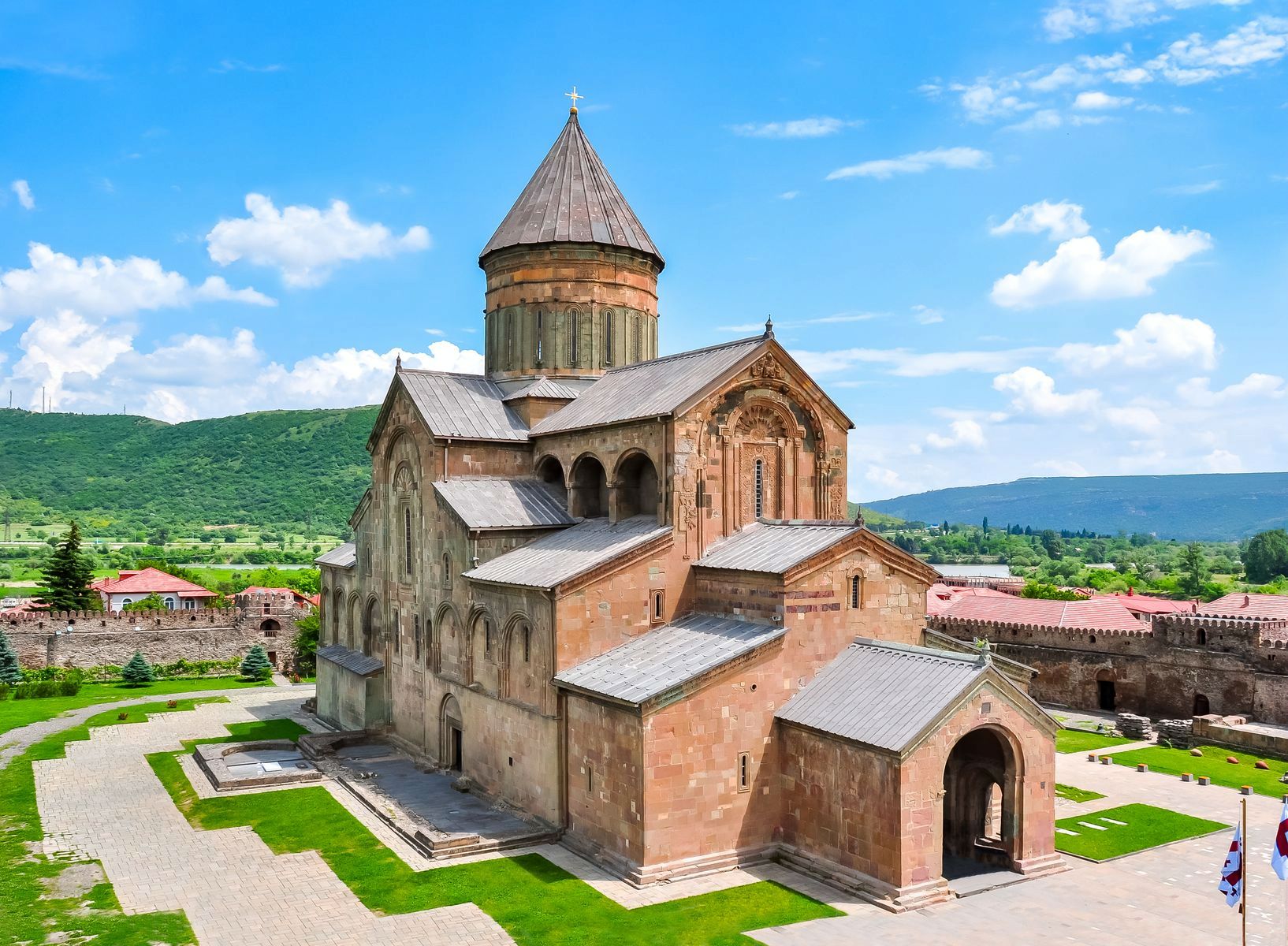
Bagrat Temple
The famous Bagrat temple is situated in Kutaisi, one of the most impressive and significant examples of cultural heritage and medieval architecture in Georgia. It was built in the XI century by the first king of United Georgia, Bagrat, and since then it has been a symbol of United Georgia. It is a cross-domed Cathedral located on the top of Ukimerioni hill. The Cathedral is distinguished by its elegant proportions, large dimensions, composition of facades, ornaments and relief carvings.
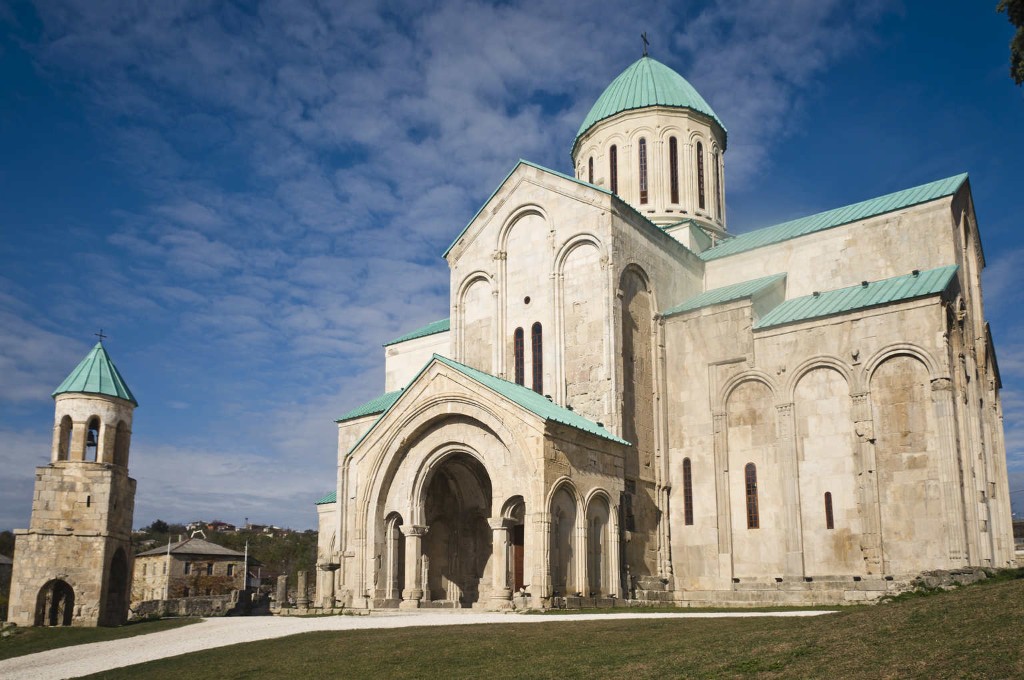
Гергетская Троицкая церковь
Speaking of monasteries and temples in the Georgian mountains, the list of the most visited ancient monasteries opens Gergeti monastery, which was built in the XIV century.
Gergeti – is a unique monastery Kazbegi district, Mtskheta-Tianeti. It is located high in the mountains. It takes time to reach the monastery and climb a steep mountain before you can treat yourself to a beautiful panoramic view of the Caucasus mountains. This makes the excursion to the monastery more interesting.
The Church of the Holy Trinity, located at the foot of mount Kazbegi near the village of Gergeti, is one of the most picturesque places in Georgia at an altitude of 2170 meters (7120 feet) above sea level. The Church is the only cross-domed Church in the area. This is the main destination for those who visit the city of Stepantsminda.
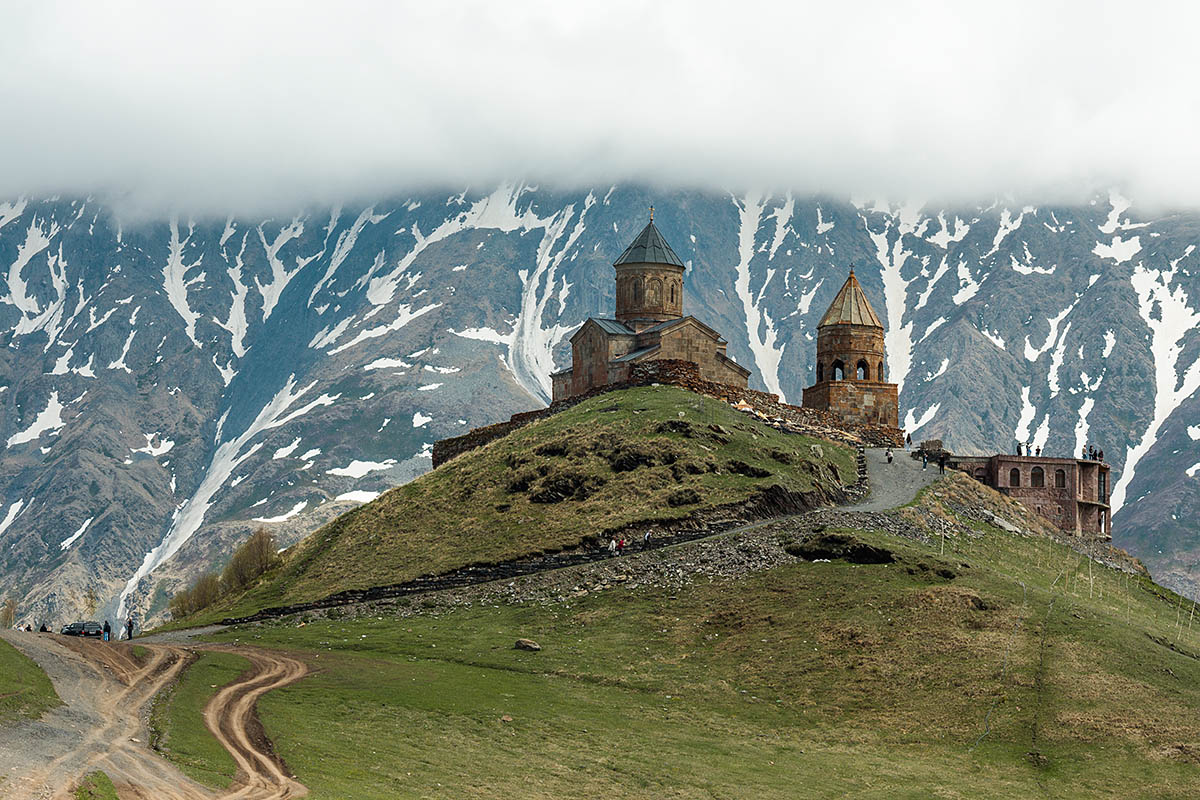
Vardzia
Despite the fact that Vardzia, Samtskhe-Javakheti,is more like a cave city, it is one of the most important religious places in the country. Here is the Church of the assumption of the blessed virgin Mary, which dates back to the 1180s, to the Golden age of Queen Tamar. The Church has a valuable series of wall paintings, including one portrait of the Queen herself. The height of the Church is 9.2 meters (30 feet), it is completely carved into the rock, like the entire city. In addition, the upper walls and vaults show episodes from the life of Christ, starting with the Annunciation.

The Jvari Monastery
Jvari monastery overlooking Mtskheta, Mtskheta-Mtianeti,
is another important religious building in Georgia and a UNESCO world heritage site. It is believed that in this monastery, founded in the VI century, Saint Nino, a woman Evangelist who brought Christianity to the country, installed a large wooden cross on the site of a pagan temple. The name ” Jvari “means”Cross” in Georgian.
The present Church has kept the names of its main builders on the facade. Like Ateni Sioni, Jvari monastery is a “four-apse” Church with a four-sided dome and serves as an example of many other churches for the further development of Georgian architecture.
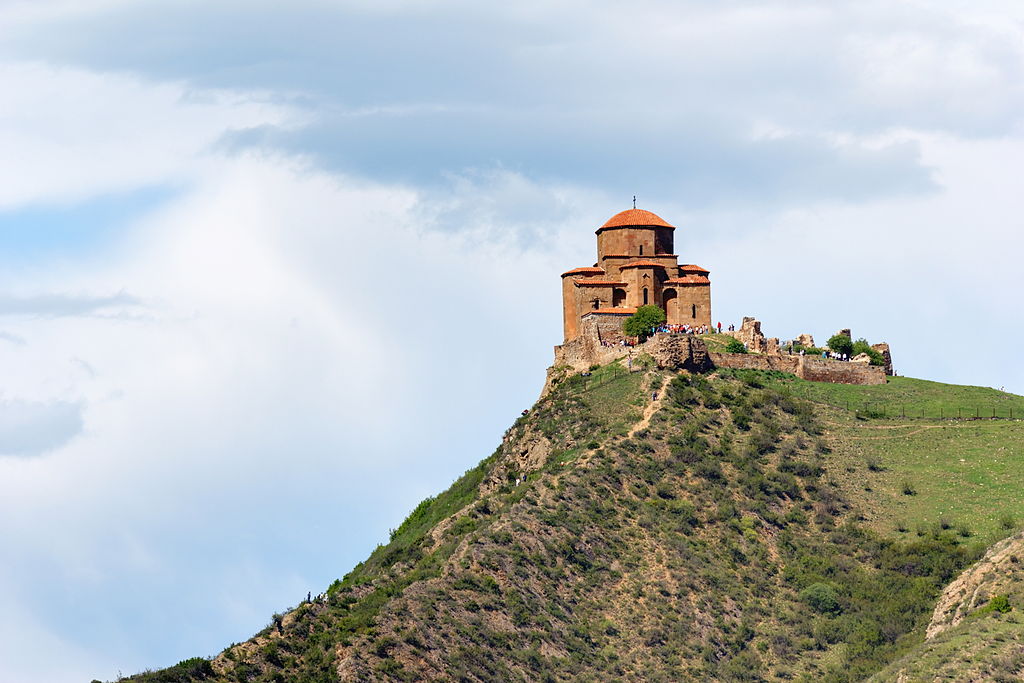
The monastery complex of David Gareja
This monastic complex is divided by the state border between Georgia and Azerbaijan, and this is recorded by a border post right inside the territory. The monastery complex of David Gareji is located in Kakheti,
and consists of about a hundred cave cells, chapels, churches, refectory rooms, and living rooms. All this is hollowed out in the rock. It is known for its inscriptions in Georgian, Armenian, Greek, Arabic, and tetralingua.
The complex was founded in the VI century by Saint David Gareji, who is revered as one of the 13 Assyrian fathers who came here to spread Christianity.
The monastery of David Gareji has remained an important Foundation of cultural and spiritual activity in Georgia for many centuries. The high aesthetic skill of these frescoes found in the monastery made them an integral part of the country’s treasure.
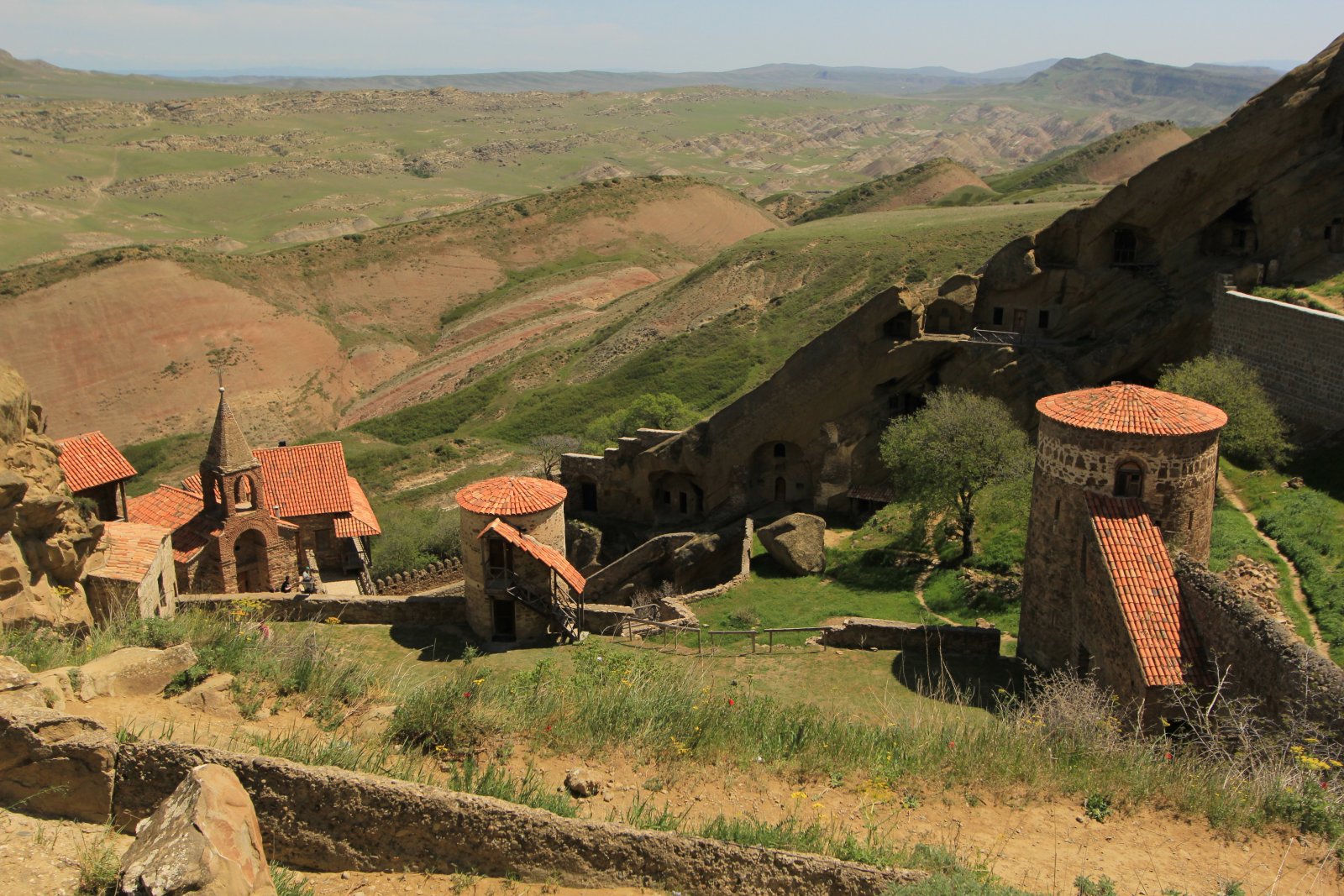
Anchiskhati Basilica
Anchiskhati Basilica is the oldest preserved Church in Тbilisi, built in the sixth century. It was originally dedicated to the virgin Mary, but since the cherished icon of the Saviour-Anchon monastery was moved to Tbilisi to preserve it from the Ottoman invasion, the Church was renamed Anchiskhati, or Ancha Icon in English, in 1675.
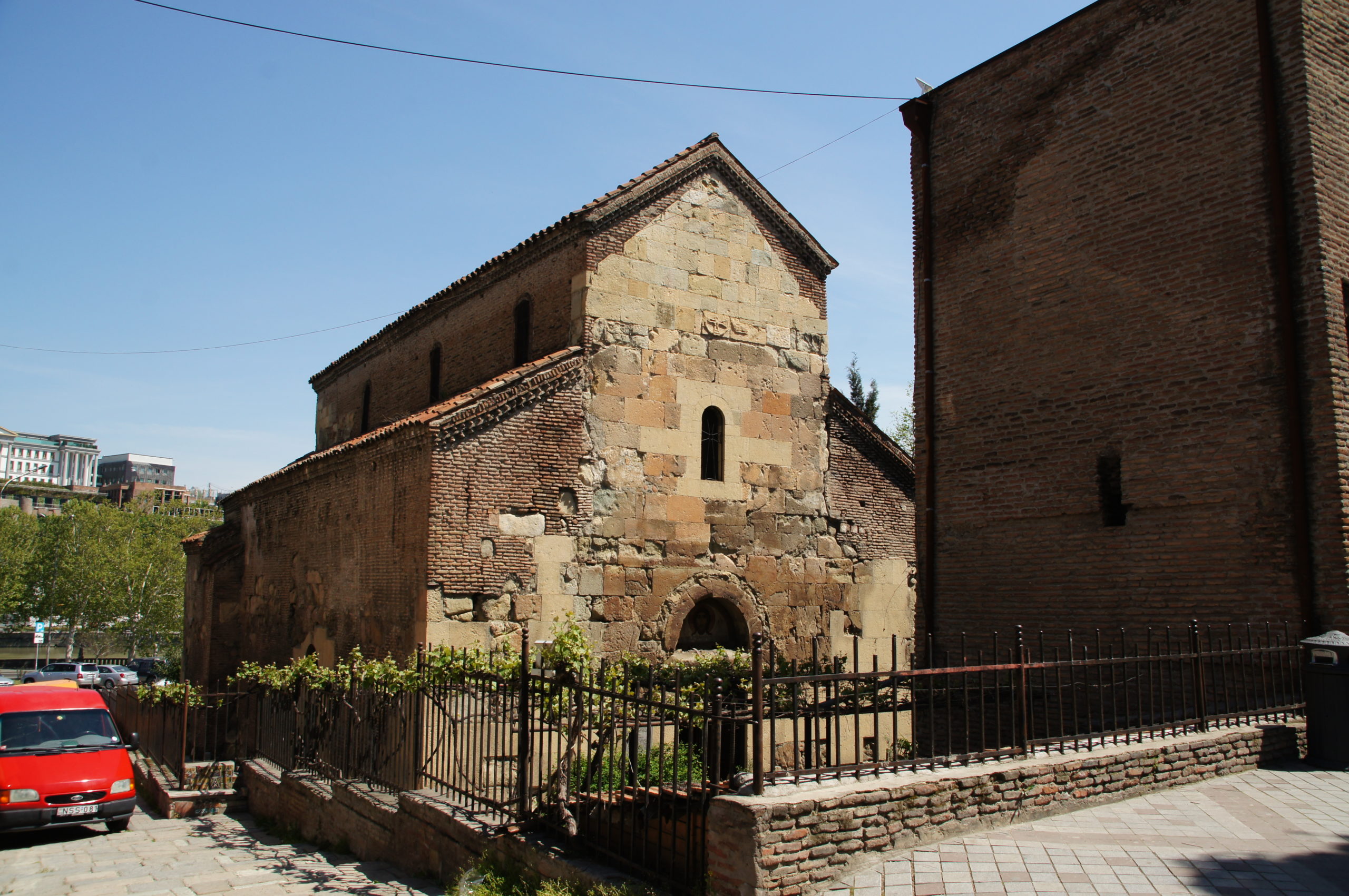
The Atenis Sioni
This early seventh-century Church in the village of Ateni is located about 10 km from Gori city, Shida Kartli. This is an early example of a “four-apse Church with four niches”, a domed Tetra-shell, richly decorated with figurative reliefs and ornaments. The walls contain the earliest known inscriptions in the nuskha-khutsuri, one of the versions of early Georgian alphabet. The earliest known examples of Mkhedruli, currently Georgian writing, can also be found here.
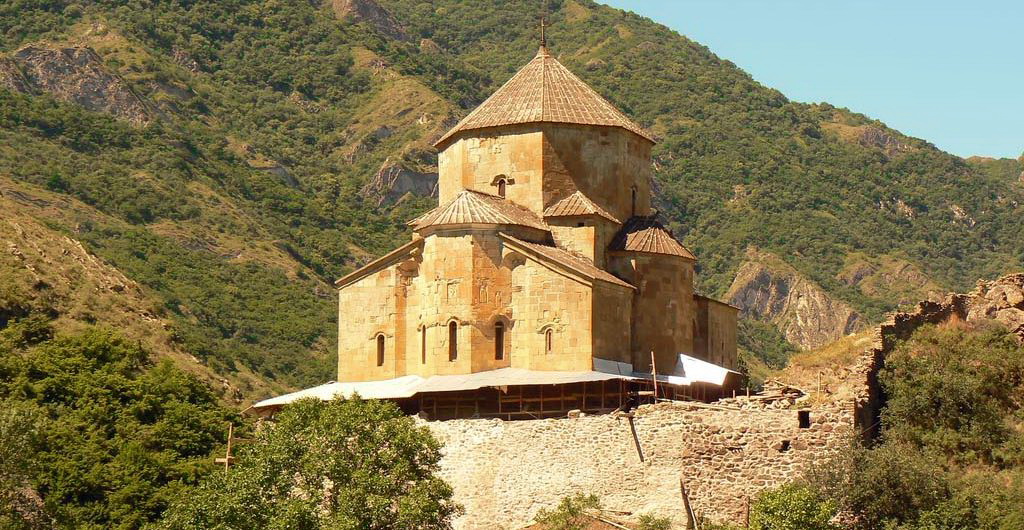
Atashga-tbilisi
This Zoroastrian temple in Тbilisi was built when Georgia was part of the Persian Empire in the Sasanian era (224-651). This is our list of the most ancient temples in Georgia. In 2017, this temple received the title of an architectural monument of national significance. The history of the Georgian country says that in 1720, a mosque was built on the site where the temple now stands, which was destroyed in 1735 (after the eviction of the Turks). Currently, the temple is partially destroyed.
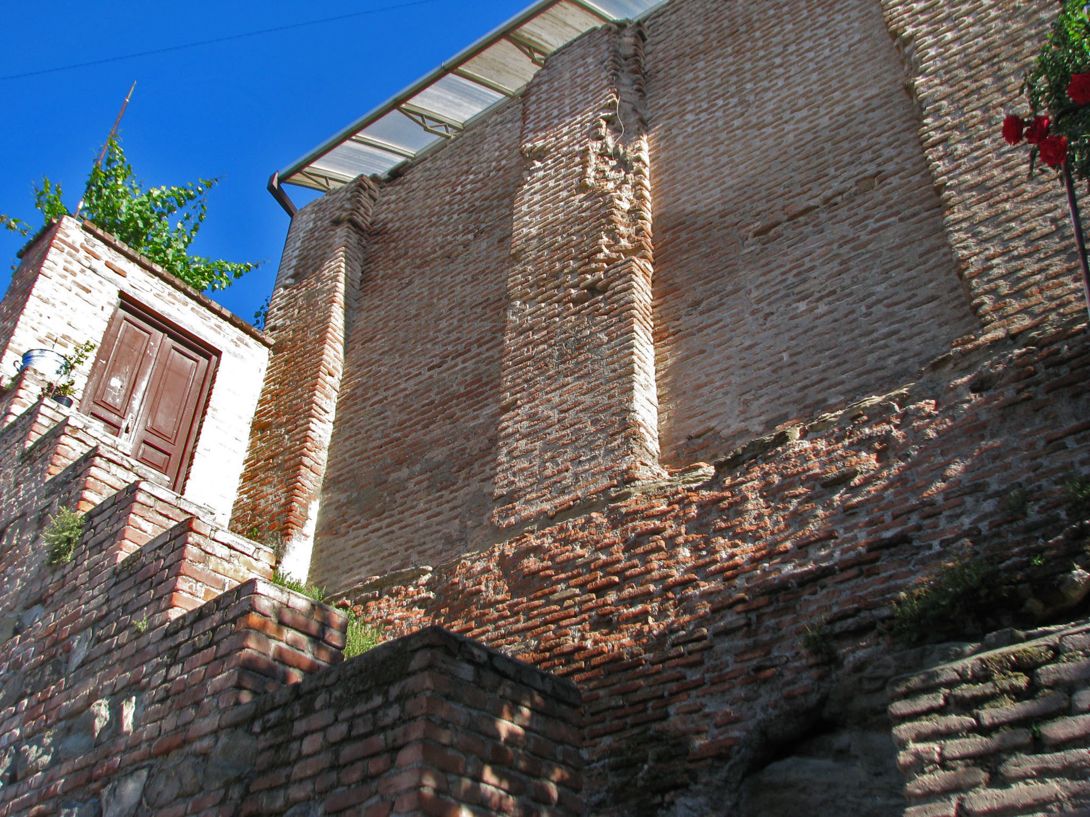
Holy Dormition Cathedral Of Manglisi
The Cathedral dates back to the VI-VII century, located near the city of Manglisi, Kvemo-Kartli.The city used to be an important religious center. According to ancient documents, the first Church on this site was built by king Mirian in the IV century, but it was demolished, and the oldest part of it dates back to the VII century. In 1002, the building was completely renovated and expanded and is home to some ancient relics of Georgian Christianity.
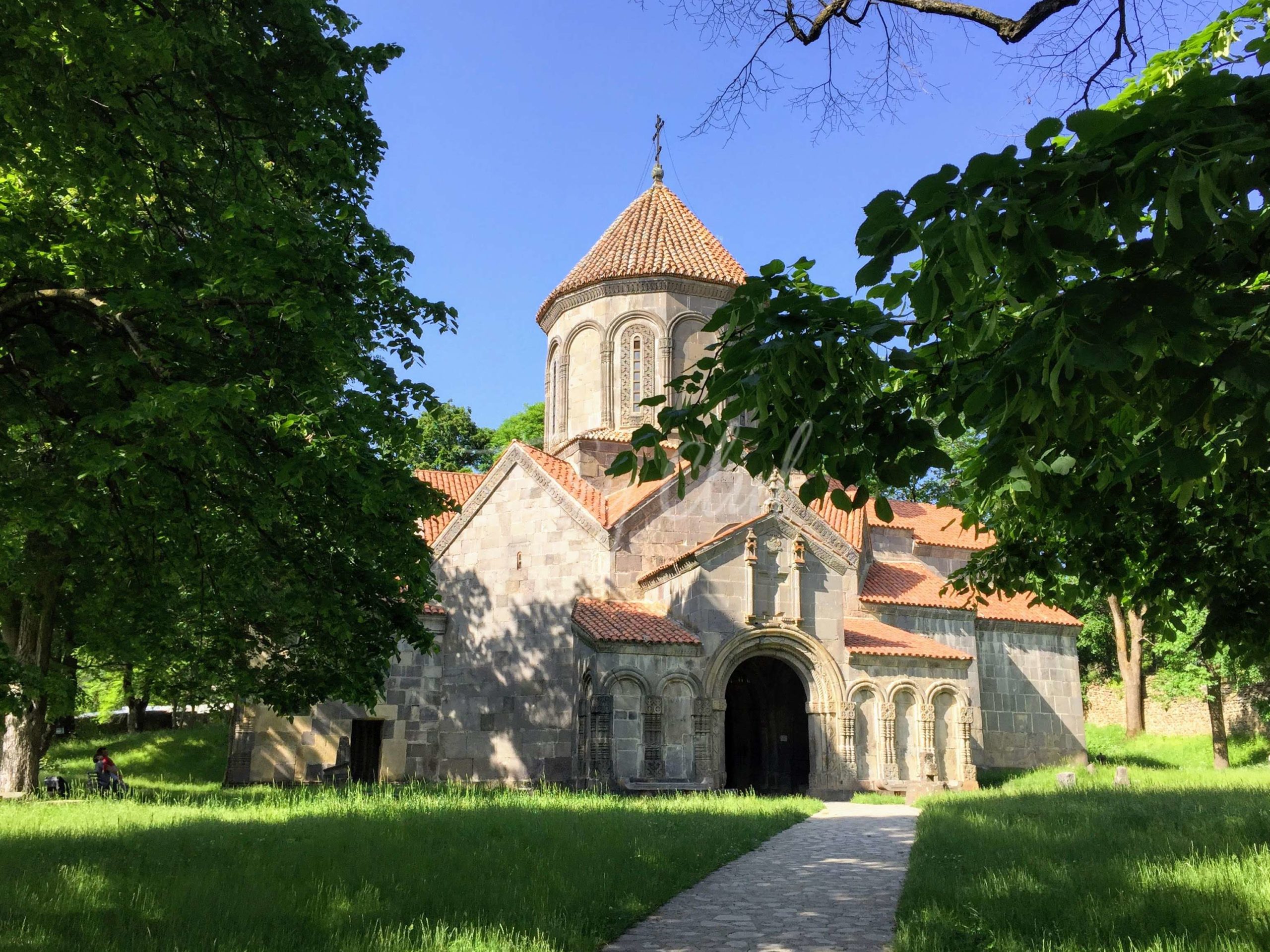
Аlaverdsky monastery
Parts of the monastery of Alaverdi, located in Каkheti, date back to the VI century, and some were built in the XI century. Founded by the Assyrian monk Joseph Alaverdeli in the vicinity of the former pagan center dedicated to the moon. With a height of 55 m (180 ft), Alaverdi was the tallest religious building in Georgia. Now it is the second after Trinity Church in Tbilisi. It should be noted that its overall dimensions are smaller than that of Svetitskhoveli.
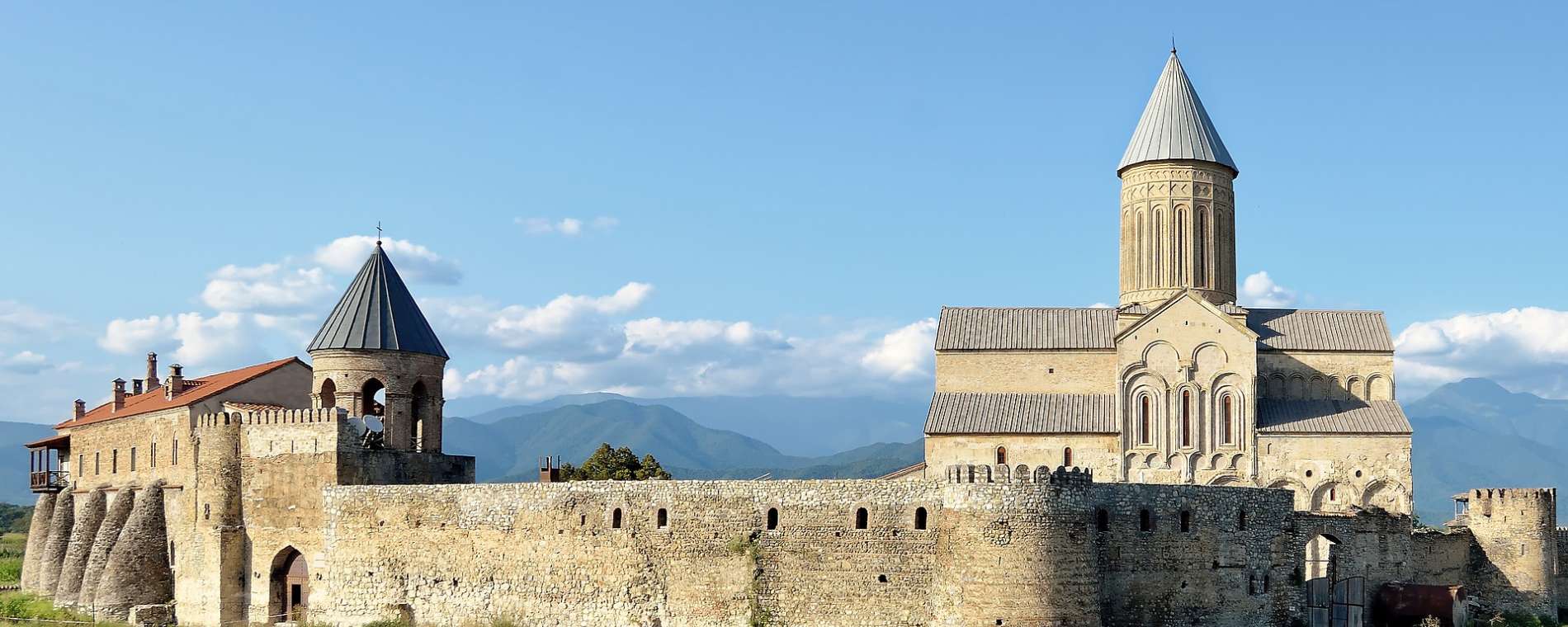
The Timotesubani
Timotesubani is a medieval monastery complex located near Borjomi, Shida Kartli, and consists of various structures built between the XI and XVIII centuries. It is a domed structure in the form of a cross made of pink stone. The interior was mostly frescoed no later than the 1220s. These frescoes are known for their liveliness and complexity of iconography.
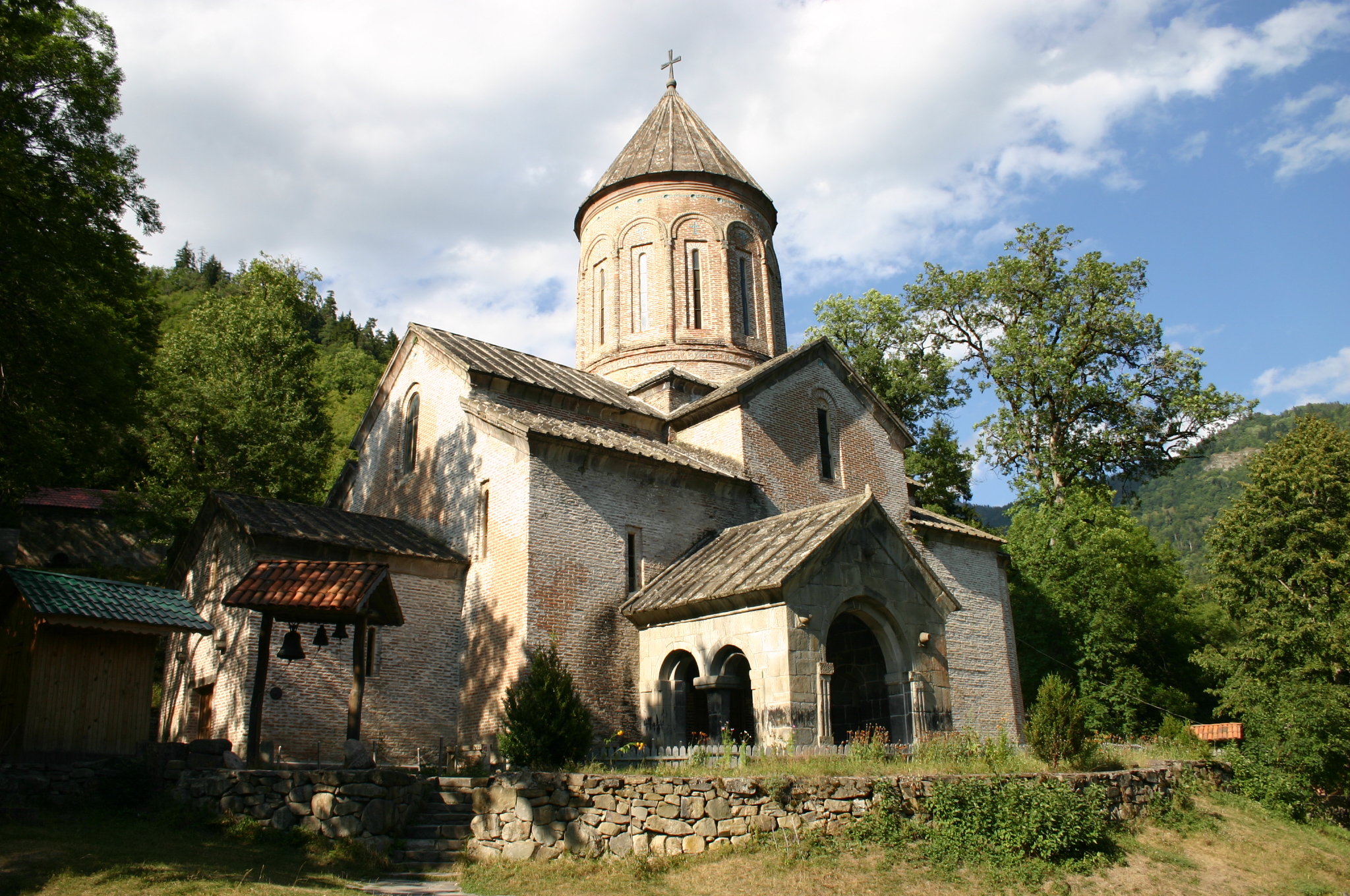
Dzveli and Akhali Shuamta monasteries
Dzveli (“Old”) and Akhali (“New”) Shuamta monasteries, located in the forests of Georgia, in Каkheti, consist of a fifth-century Basilica, a 17th-century domed Church, and a small seventh-century domed Church. The Church was built of cobblestones; the corner was faced with carved stones. In the XVI century, Dzveli Shuamta monastery was abandoned. In 1520 – 1574, the Akhali Shuamta monastery was built near Dzveli Shuamta monastery. The location of the monasteries makes them and excursions to them more interesting.
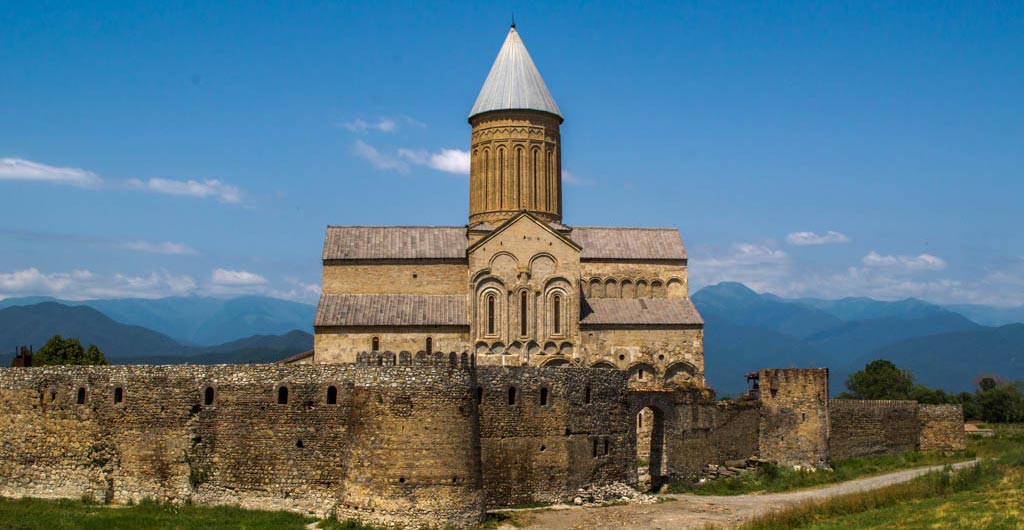
Shio-Mgvime monastery
Shio-Mgvim monastery or, as it is literally translated, “Shio cave”, is located near Mtskheta, Мtskheta-Mianeti, about 30 km from the capital of Georgia, Tbilisi. History says that the first monastic community was established here in the VI century by a monk-Shio. One of the first parts of the monastery was the Church of John the Baptist. It was built in the 560 – 580’s. Currently, Shio-Mgvime is a functioning monastery and is very popular among tourists.
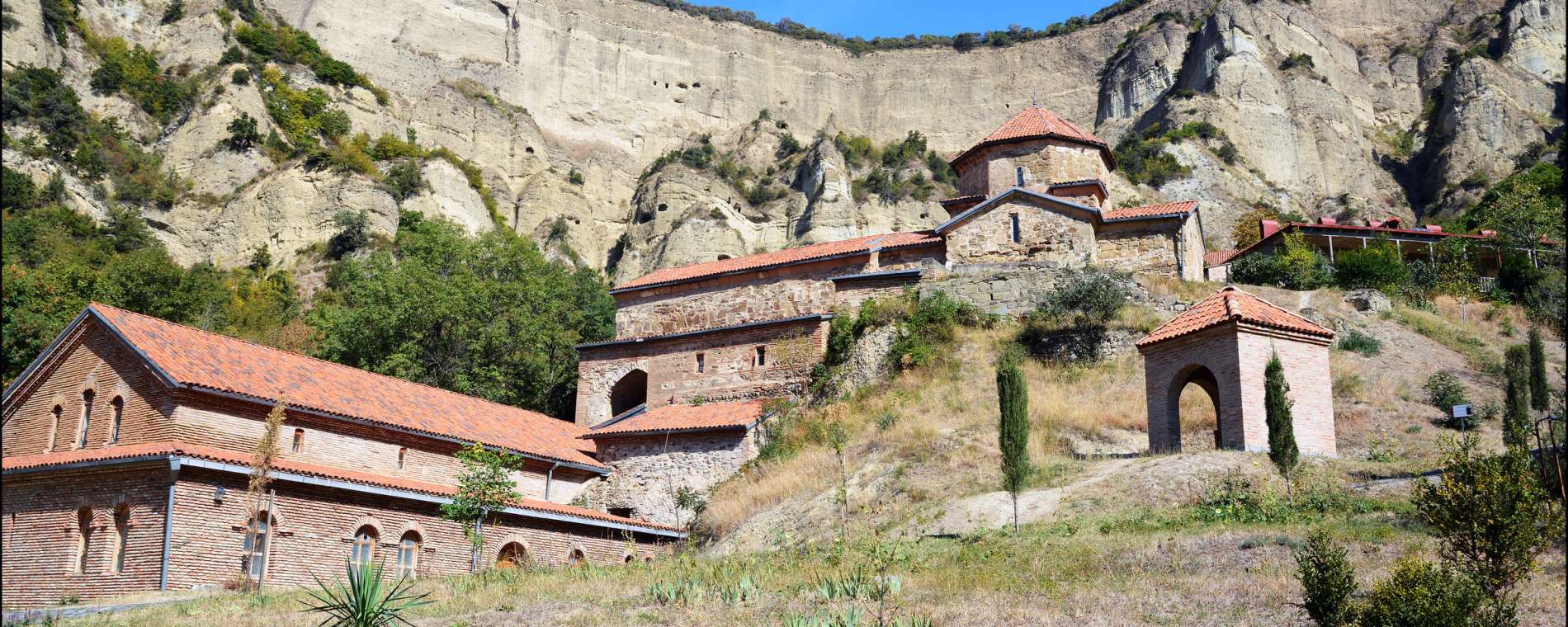
Tours to Georgia from GEO-GEORGIA. Plan a unique stay in Georgia. Find your ideal place to stay. Please contact us by email geogeorgia.travel@gmail.com or call by phone +995599955541.

 geogeorgia.travel@gmail.com
geogeorgia.travel@gmail.com




